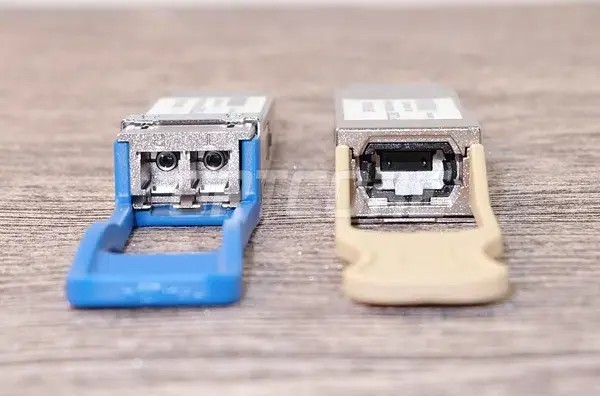Optcore QSFP28-100G-SR4 vs. QSFP28-100G-LR4 Compare, What Are The Key Differences?
- optcore
- 2024年11月25日
- 讀畢需時 2 分鐘
The QSFP28-100G-SR4 and QSFP28-100G-LR4 are probably the most widely used 100G optical transceivers in today’s data center and cloud computing real-world scenarios. The differences between these types of 100G optical transceivers are apparent for professionals who can easily choose a suitable module. Still, some non-experts may not understand the differences. This article will compare these two types of Optcore optical transceivers and understand the key differences between them, and I hope it will be helpful.
QSFP28 Form Factor Overview
100G QSFP28 transceivers provide a high-capacity connection between devices and networks, making them ideal for data center and cloud migration. Compared to 10G SFP+ and 40G QSFP+ transceivers, the 100G QSFP28 transceivers offer significantly higher transmission capacities and are backward compatible with QSFP+ optics. They also feature low insertion and return loss, making them well-suited for high-speed networking applications.
What is Optcore QSFP28-100G-SR4 Transceiver?
A QSFP-100G-SR4 transceiver is an optical transceiver that features an MPO/MTP connector and supports the 100GBASE-SR4 protocol. It is optimized for dense and high-speed optical networks, such as data center aggregation and core-to-node aggregation. Compared to the QSFP28-100G-LR4 transceiver, the QSFP-100G-SR4 transceiver only supports OM3/OM4 multimode fiber, a parallel fiber transceiver.
What is Optcore QSFP28-100G-LR4 Transceiver?
With a working wavelength ranging from 1295 nm to 1310 nm, Optcore QSFP28-100G-LR4 optical transceiver module is a hot-pluggable, four-channel, and full-duplex optical transceiver module designed for long-distance transmission in the 100G Ethernet network up to 10 kilometers in the distance. It has a built-in wavelength-division multiplexing (WDM), making it possible to easily and quickly provision four large bandwidth channels for high throughput data transmission.
Key Differences Behind Optcore QSFP28-100G-SR4 vs. QSFP28-100G-LR4
Although both QSFP28-100G-SR4 and QSFP28-100G-LR4 have the QSFP28 form factor and the same speed, they are pretty different. The critical difference is the fiber connector, max distance, wavelength, and supported fiber cable. The following table briefly compares these two types of 100G optical transceivers.
Part# | Wavelength | Data Rate | Distance | Connector | Optical Components | Media | DDM | Protocol support | Modulation | Price |
QSFP28-100G-SR4 | 850nm | 100Gbps | 100m | MPO/MTP | VCSEL+PIN | OM3/OM4 | Yes | 100GBASE-SR4 | NRZ | $$ |
QSFP28-100G-LR4 | 1310nm | 100Gbps | 10km | LC Duplex | LAN WDM DFB+PIN | SMF | Yes | 100GBASE-LR4 | NRZ | $$$ |
The above table shows the most apparent differences are the different fiber connectors, fiber types, and transmission distances. For long-distance transmission, we can only choose the QSFP28-100G-LR4. The best choice for a short-distance multimode fiber cabling environment is the QSFP28-100G-SR4, which has the lowest overall cost.

Which one is better: QSFP28-100G-SR4 or QSFP28-100G-LR4?
There is no definitive answer to this question as it depends on your specific needs and requirements. Both QSFP28-100G-SR4 and QSFP28-100G-LR4 offer excellent performance benefits, so it comes down to what you are looking for. Specifically, the QSFP28-100G-LR4 version offers greater distance capacity over the QSFP28-100G-SR4 variant. Additionally, the QSFP28-100G-SR4 is cheaper than LR4 but only supports 100m on the OM3 fiber cable. If you need greater distance capacity or shorter-reach distances, then the QSFP28-100G-LR4 version is a better option. The QSFP28-100G-SR4 variant may be better if you only have a multimode fiber cabling network.
Final Words
Optcore QSFP28-100G-SR4 and QSFP28-100G-LR4 are 100 Gigabit optical transceivers with different performance benefits, connector types, and fiber cable support. Although the differences between these two types of transceivers are minor in most cases, it is crucial to consider your specific needs when choosing which one to buy.



留言